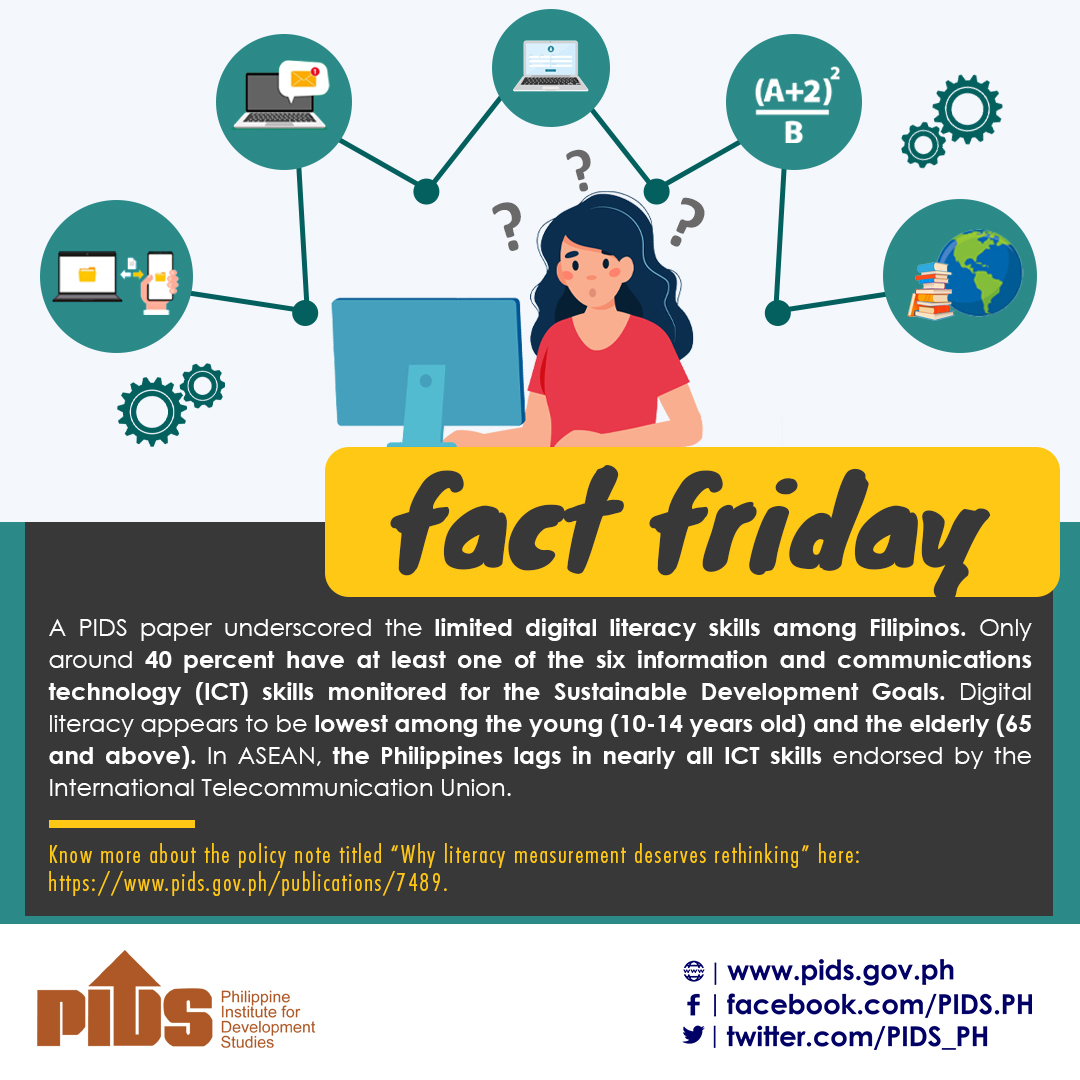MANILA, Philippines — On top of the pain inflicted by COVID-19 on the health sector, losses in Filipino workers’ wages and productivity have been estimated to hit as much as P2.3 trillion during their lifetime, the state-run think tank Philippine Institute for Development Studies (PIDS) said.In his paper titled “The Multifaceted Health Impacts of the COVID-19 Pandemic,” which he also discussed during a webinar on Thursday, PIDS senior research fellow Valerie Gilbert Ulep pointed out that this economic cost mostly came from the COVID-19 pandemic’s indirect impact, such as many people suffering from other diseases who were unable to be treated as hospitals prioritized coronavirus infections, as well as school closures, which impacted on children’s learning.
“The long-run productivity losses because of both direct and indirect [health and other impact of COVID-19] is around P2.3 trillion, in net present value,” Ulep told the webinar.
Ulep and other Philippine-based researchers as early as March this year flagged in a separate paper released by the Washington-based think tank Center for Global Development (CGD) that the number of Philippine Health Insurance Corp. (PhilHealth) claims to cover 12 “high-burden” diseases dropped last year as medical care focused on COVID-19.
In June, another CGD paper co-authored by Ulep pointed to risks to Filipino children’s health and growth, as their research showed up to 70-percent year-on-year decline in 60 government hospitals’ admissions for pediatrics during the second quarter of last year — at the the height of the most stringent COVID-19 lockdown imposed in the Philippine to control virus spread.
The drop in hospital admissions among children was faster than the 40-percent decline among adults, such that CGD said “the sharp decline in pediatric cases suggests that children are bearing the brunt of the pandemic.”
In his Nov. 17 PIDS paper, Ulep said increases in food security among households due to job losses would not only increase stunting in children but also inflict P633.8 billion in life-long losses.
In a report in June, the World Bank said the Philippines was suffering from a “silent pandemic” — childhood stunting as a result of undernutrition. Stunted kids were smaller in height compared to healthier children of the same age.
World Bank estimates showed that in 2019, 29 percent of Filipino kids who were aged five and below were stunted. In the East Asia and Pacific region, the Philippines had the fifth-highest stunting prevalence; worldwide, the country was among the top 10.
Ulep said a decline in treatment of tuberculosis (TB), meanwhile, would result in P28.9 billion in losses. TB was among the diseases whose PhilHealth claims dropped last year, reflecting fewer treatments amid the pandemic.
A drop in treatment of HIV would inflict P16.8 billion in losses, while slower child immunization against other diseases as the government prioritized mass vaccination against COVID-19 would cost Filipinos P278.3 billion in lost opportunities, Ulep said.
Ulep’s estimates also showed that the premature deaths caused by COVID-19 would inflict P94 billion in lost household incomes, while premature deaths due to other diseases which took a backseat to the deadly coronavirus would cost a bigger P398 billion.
Those who got sick with COVID-19 were estimated to lose P66 billion in wages during their lifetime, while incomes of those with non-coronavirus morbidities that had lack of healthcare amid the pandemic would be short of a larger P1.7 trillion.
“In the Philippines, in-patient care for high-burden diseases sharply declined during the first year of the pandemic. The poorest population suffered the biggest decline. So children and a lot of vulnerable populations are bearing the brunt of the pandemic,” Ulep said.
To address this, Ulep said “the government must find innovative ways on how non-COVID-19 patients can still access healthcare services during the pandemic,” specifically by investing in electronic health information systems to digitize monitoring and surveillance, as well as by incentivizing the use of telemedicine.
“The long-run productivity losses because of both direct and indirect [health and other impact of COVID-19] is around P2.3 trillion, in net present value,” Ulep told the webinar.
Ulep and other Philippine-based researchers as early as March this year flagged in a separate paper released by the Washington-based think tank Center for Global Development (CGD) that the number of Philippine Health Insurance Corp. (PhilHealth) claims to cover 12 “high-burden” diseases dropped last year as medical care focused on COVID-19.
In June, another CGD paper co-authored by Ulep pointed to risks to Filipino children’s health and growth, as their research showed up to 70-percent year-on-year decline in 60 government hospitals’ admissions for pediatrics during the second quarter of last year — at the the height of the most stringent COVID-19 lockdown imposed in the Philippine to control virus spread.
The drop in hospital admissions among children was faster than the 40-percent decline among adults, such that CGD said “the sharp decline in pediatric cases suggests that children are bearing the brunt of the pandemic.”
In his Nov. 17 PIDS paper, Ulep said increases in food security among households due to job losses would not only increase stunting in children but also inflict P633.8 billion in life-long losses.
In a report in June, the World Bank said the Philippines was suffering from a “silent pandemic” — childhood stunting as a result of undernutrition. Stunted kids were smaller in height compared to healthier children of the same age.
World Bank estimates showed that in 2019, 29 percent of Filipino kids who were aged five and below were stunted. In the East Asia and Pacific region, the Philippines had the fifth-highest stunting prevalence; worldwide, the country was among the top 10.
Ulep said a decline in treatment of tuberculosis (TB), meanwhile, would result in P28.9 billion in losses. TB was among the diseases whose PhilHealth claims dropped last year, reflecting fewer treatments amid the pandemic.
A drop in treatment of HIV would inflict P16.8 billion in losses, while slower child immunization against other diseases as the government prioritized mass vaccination against COVID-19 would cost Filipinos P278.3 billion in lost opportunities, Ulep said.
Ulep’s estimates also showed that the premature deaths caused by COVID-19 would inflict P94 billion in lost household incomes, while premature deaths due to other diseases which took a backseat to the deadly coronavirus would cost a bigger P398 billion.
Those who got sick with COVID-19 were estimated to lose P66 billion in wages during their lifetime, while incomes of those with non-coronavirus morbidities that had lack of healthcare amid the pandemic would be short of a larger P1.7 trillion.
“In the Philippines, in-patient care for high-burden diseases sharply declined during the first year of the pandemic. The poorest population suffered the biggest decline. So children and a lot of vulnerable populations are bearing the brunt of the pandemic,” Ulep said.
To address this, Ulep said “the government must find innovative ways on how non-COVID-19 patients can still access healthcare services during the pandemic,” specifically by investing in electronic health information systems to digitize monitoring and surveillance, as well as by incentivizing the use of telemedicine.












